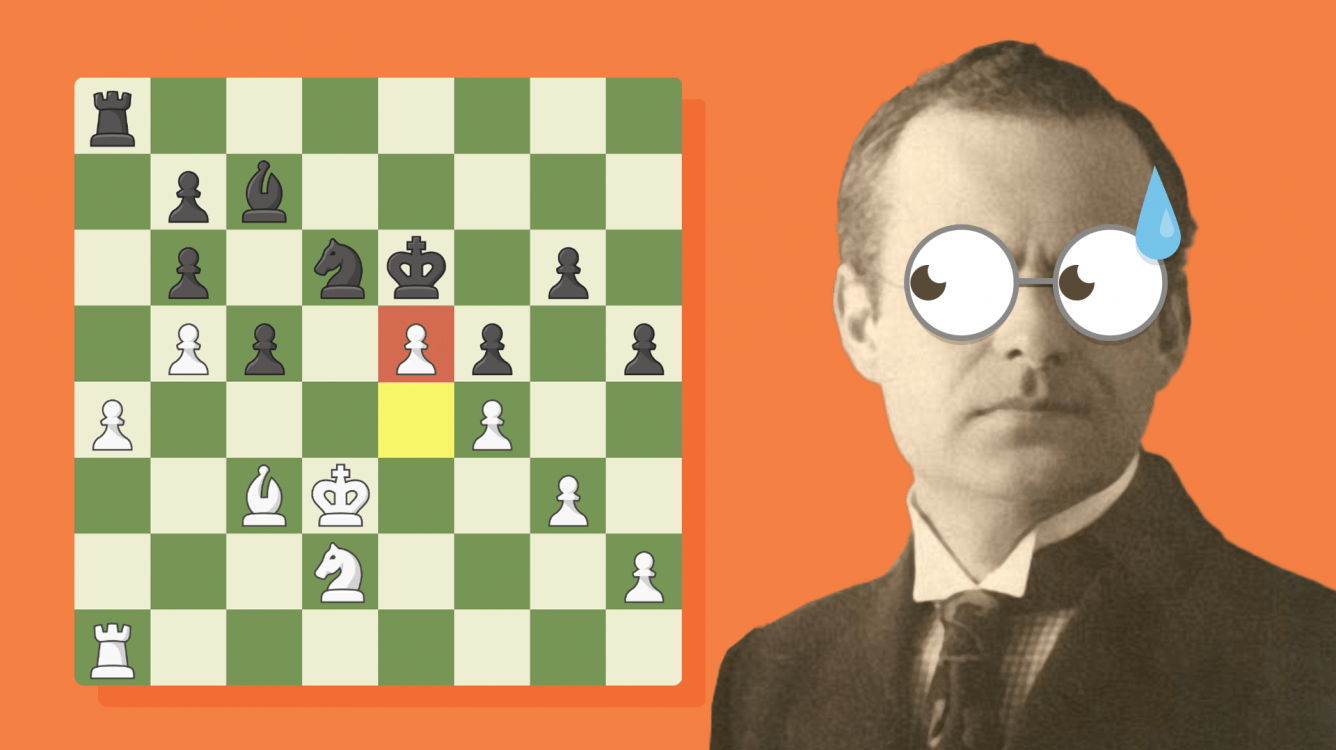
Don't Mess With Protected Passed Pawns!
For many generations of chess players, Aron Nimzowitsch's famous book My System was sort of a chess bible. World Champion GM Tigran Petrosian admitted that as a kid, he kept this book under his pillow. Another world champion, GM Mikhail Tal, regretted that he read that book relatively late when he was already a candidate master.
Nimzowitsch devoted the bulk of the book to the problems of different pawn structures (isolated pawns, hanging pawns, passed pawns, etc.), and therefore for the coming decades, he affected the way chess players treated these issues.
Take a look at the position which Nimzowitsch provided in his book to demonstrate the power of a protected passed pawn.
This endgame shows the main power of a protected passed pawn—a power that is hinted at in its name! The pawn is protected, and therefore the black king cannot capture it, so he becomes paralyzed and unable to move without letting the pawn promote. This example was copied hundreds of times in various publications, which always surprised me.
Take, for example, an extremely popular book by Soviet master Victor Golenishchev. It was a detailed plan of preparation for young beginners to reach the first category level (around USCF 1800). This book was available in thousands of Soviet chess clubs—I had it as a kid as well. Why was Golenishchev (and dozens of other authors) unable to come up with their own examples to demonstrate the strength of a protected passed pawn? You can compose a position like this in literally 10 seconds:

Black can only helplessly watch the white king collect all their queenside pawns.
Anyway, let's get back to Nimzowitsch's My System. It contains numerous examples where the author explicitly underlines the power of a protected passed pawn. As a result, by the time you finish reading the book, you are left with a strong impression that whoever gets a protected passed pawn wins the game! But as you get more experienced, you see some games here and there where a passed pawn doesn't bring a win, and it can even be sort of useless. Here are a couple of golden oldies:
I am sure you already figured out what happened in these two games. White's protected passed pawns were securely blockaded and rendered completely irrelevant. What really mattered (and actually decided both games) was the activity of the black pieces.
It is games like this that force you to question common wisdom. Are protected passed pawns really that strong? And then you get a lesson:
Just like Nimzowitsch warned in his book, White's protected passed pawn severely restricted the movement of Black's pieces, hence the result of the game was predetermined. Now you can see that in cases where a protected passed pawn is securely blockaded and doesn't restrict the free movement of the opponent pieces, it is not dangerous at all.
But if you have active pieces and a protected passed pawn, then most probably your opponent is doomed. In my experience, the second scenario (a protected passed pawn restricts an opponent's pieces) is way more common, so Nimzowitsch was right when he praised protected passed pawns in his book.
In the recent FIDE World Cup two very strong grandmasters decided to ignore Nimzowitsch's wisdom and promptly paid the price:
The conclusion is very simple: don't mess with protected passed pawns!
Do you have any great games where you won with protected passed pawns? Have you ever lost to protected passed pawns? Let us know in the comments below!



